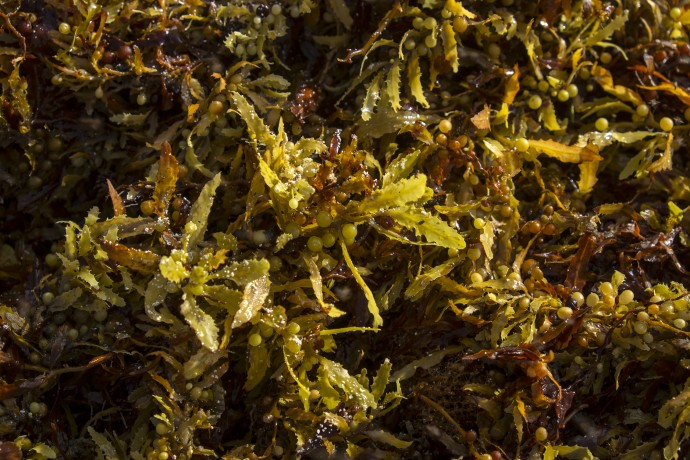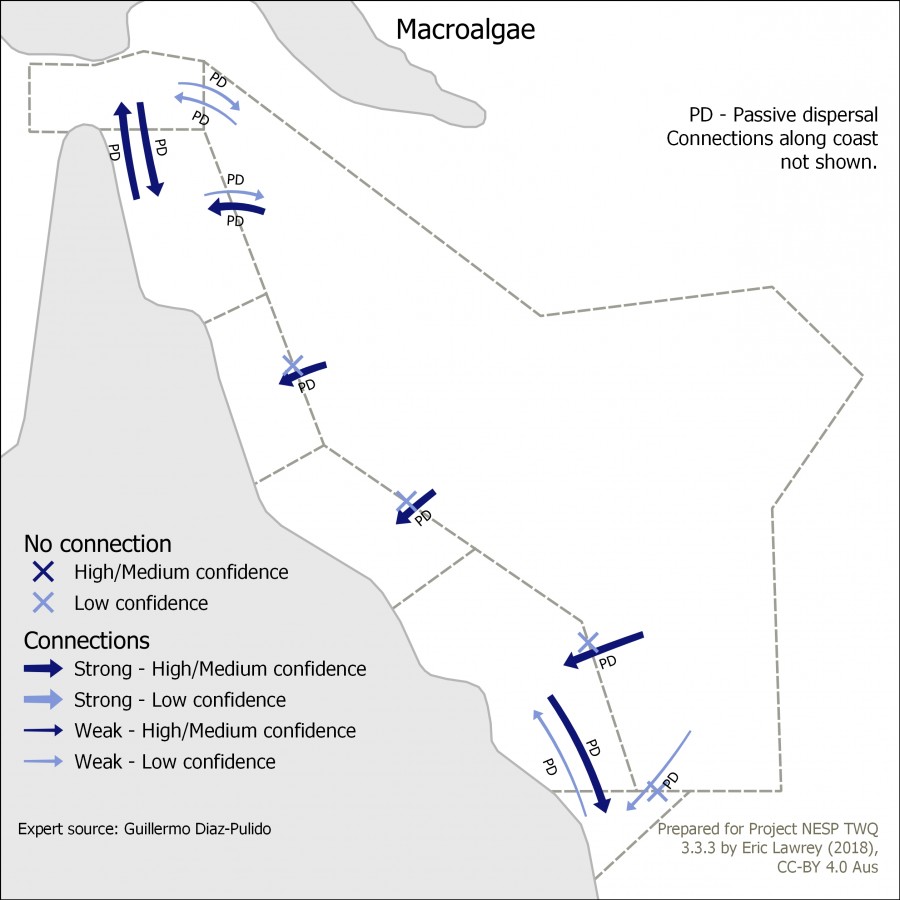Macroalgae
What is macroalgae and why it is important?
Macrolgae, commonly called seaweeds, are marine plants that photosynthesize, but reproduce without flowers (seagrasses are an example of a marine flowering plant). Macroalgae are visible to the naked eye (in contrast to microalgae), and generally grow attached to the seabed or reef substrate. Macroalgae are important components of the reef ecosystem, providing food and habitat to a diverse range of species, while also playing a key role in nutrient dynamics. In shore areas, such as some inshore reefs, they can be a dominant feature, sometimes forming dense forests. They can also be major competitors for space, overgrowing and excluding other organisms such as hard corals. This can occur where growth of macroalgae is enhanced by excess nutrients (nitrogen from agricultural runoff or other sources of pollution) or reduced herbivory (overharvesting of herbivorous fishes). While not known to be a problem in the Great Barrier Reef, invasive species of macroalgae can become established and create long-lasting shifts in the species composition of coral reefs. Persistent “phase shifts”, where macroalgae take over from hard corals as the dominant life-form on a reef, are one of the largest concerns for coral reef managers and often cited as the likely result of a severe loss of resilience.
Key concepts that relate to connectivity
Most macroalgae reproduce by releasing gametes into the water column, where they form propagules which drift until competent to settle. While in the plankton, macroalgal propagules drift passively.
For macroalgae, the patterns of connectivity between reefs creates networks of interdependencies that are important to the sustainability of populations. Where macroalgae and corals are in natural balance, maintaining connectivity will be important to reef ecosystem health. However, for invasive species of macroalgae, or where algal growth is artificially enhanced, connectivity may contribute to perpetuation of an undesirable state. The processes that determine connectivity (mostly ocean current direction and strength) link macroalgae populations between the Great Barrier Reef and all adjacent jurisdictions.
A range of threats can compromise connectivity, including chemical spills, degraded water quality and extreme temperatures. The dependence of many reefs on upstream (source) reefs for supply of macroalgae propagules also means that the type and condition of macroalgae in one jurisdiction may be important to the management objectives of reefs in an adjacent jurisdiction.






